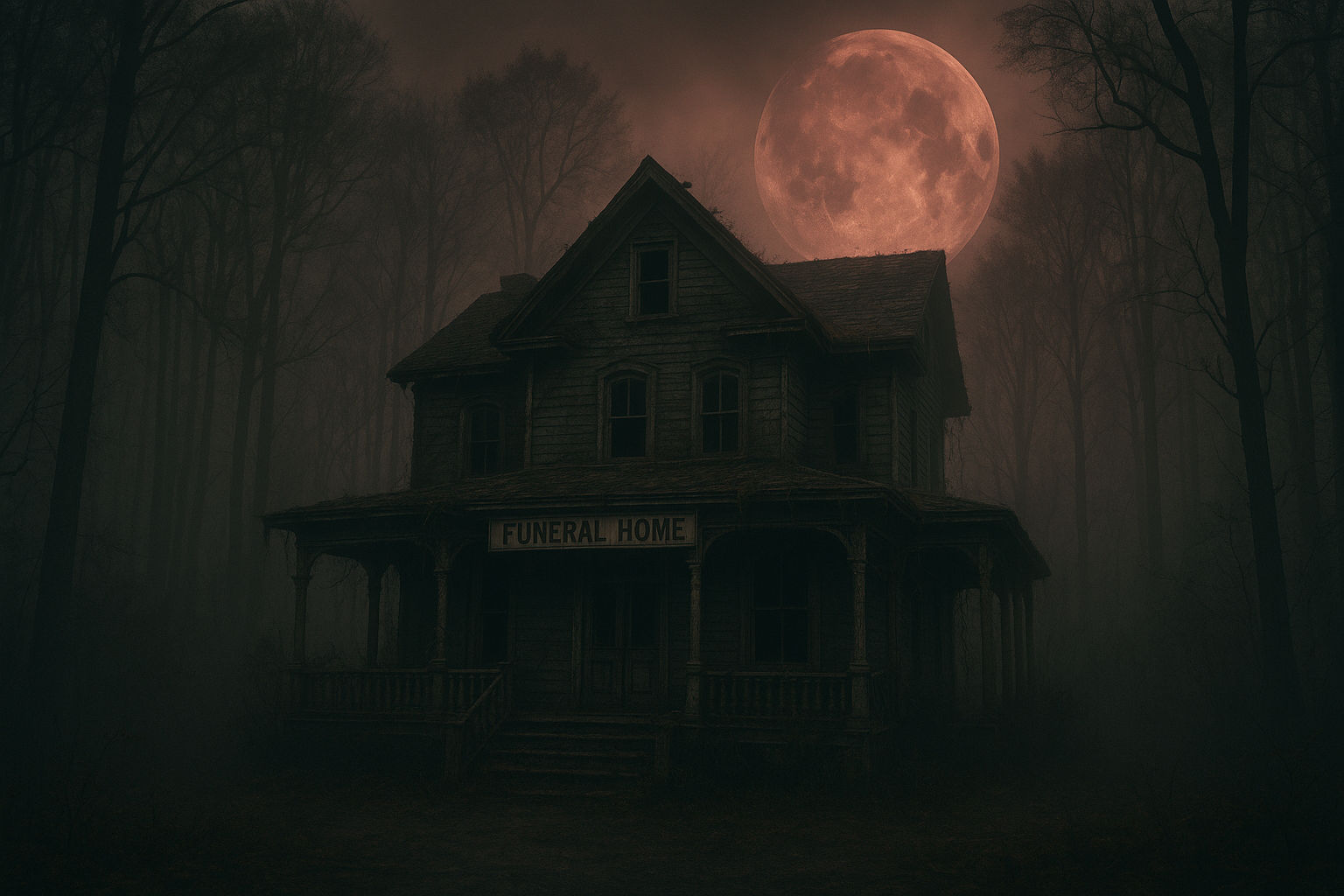


Museum of the Macabre
I. The Collector of Stillness
The old Hawthorne Funeral Home sat at the end of a lonely street, wrapped
in the embrace of ancient oaks whose gnarled branches clawed at the sky.
It had served the town for nearly a century, a place where grief was
processed, rituals were observed, and the dead were sent to their final rest.
At least, that was what everyone believed.
Mortimer Hawthorne, the third-generation funeral director, was a man of
quiet disposition and peculiar tastes. He had inherited the business after
his father’s passing and had upheld its reputation with solemn efficiency.
The townsfolk respected him, though none could say they truly knew him.
He was always there when death called, his thin, pale hands gently guiding
families through the process of farewell.
Yet, behind the heavy oak doors of the funeral home, a secret lay entombed
within its walls—a grotesque collection that Mortimer had nurtured for
decades. The bodies that should have been laid to rest were never buried,
never burned. Instead, they were meticulously preserved, their glassy eyes
staring into the abyss of an endless purgatory.
II. The Museum of the Departed
Inside Mortimer’s private wing of the home, the dead were arranged in
elaborate tableaus, each frozen in time as though caught in the midst of
their final moments. A woman in a crimson gown, eternally poised in a
waltz with an invisible partner. A child sitting cross-legged with a porcelain
doll clutched in her arms. An elderly man seated in a rocking chair, his lips
curled in a serene, unnatural smile.
Mortimer did not see them as corpses. To him, they were art—his guests, his companions in the solitude of his existence. He would often sit among them, sipping tea, whispering secrets to the silent figures as if they might respond. They were more than just bodies; they were his masterpieces, each one preserved with meticulous care, their flesh treated with chemical precision to prevent decay.
At night, when the town was asleep, Mortimer would walk through his grotesque museum with a lantern in hand, admiring his work. He had long stopped seeing death as an end—it was a transformation, a preservation of beauty that time could never erode.
III. The Whispering Dead
But the dead do not rest easily when denied their peace.
Strange occurrences began to plague Mortimer’s home. Shadows shifted when no one moved. A whisper—soft, almost imperceptible—would curl through the halls like a draft, yet no wind stirred outside. He would hear his name spoken in voices long silenced, their murmurs echoing from the corners of his collection.
Then, the bodies began to move.
It started subtly—a hand shifting ever so slightly, a head tilting in a direction it hadn’t before. At first, Mortimer convinced himself it was his imagination. But as the nights stretched on, the changes became undeniable. The figures would be found in different poses, their glassy eyes now fixed upon him wherever he stood.
One evening, as he made his rounds through the museum, he found the elderly man’s rocking chair swaying gently, though the air in the room was still. The child with the porcelain doll, who had always sat placidly on the floor, was now standing in the middle of the hallway.
And then, the music box played.
The melody was faint, a delicate chime that drifted from the waltzing woman’s frozen fingers. She had never held a music box before. Mortimer’s breath hitched as he stepped closer, his pulse hammering against his ribs. The song was one he had heard before—a lullaby his mother had sung when he was a boy.
And then, with a creaking of preserved joints, she moved.
Her head twisted toward him with a sickening pop, her lips parting as a dry, rattling whisper escaped her throat.
“Let us rest, Mortimer.”
The lights flickered, the air grew thick with the scent of decay, and a chorus of whispers rose from the depths of the home. The bodies shifted in unison, their dead eyes locked onto their captor.
Mortimer stumbled backward, the walls closing in as the whispers grew into a wail. A spectral wind howled through the corridors, rattling the bones of the long-forgotten. The weight of his sins bore down upon him, and as he turned to flee, the hands of the dead reached for him, dragging him into their eternal stillness.
IV. The Abandoned Funeral Home
Years passed, and the Hawthorne Funeral Home fell into ruin. The townspeople whispered of the strange disappearance of Mortimer Hawthorne, of how his doors had been found wide open, the interior untouched yet eerily lifeless. No bodies were ever discovered, no trace of the funeral director remained.
But those who dared to peer through the dust-covered windows swore they saw shadowed figures still standing within, forever watching, forever waiting.
